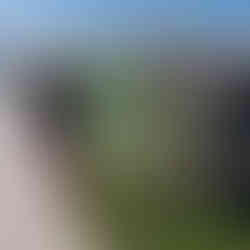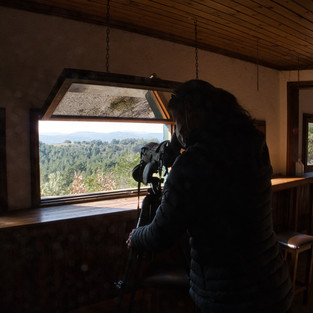At the end of February we visited the oldest project of WWF Greece: the Evros Project in Dadia National Park. It focuses on the conservation of rare birds of prey, especially Egyptian, black and griffon vultures. These large birds are threatened by illegal use of poisoned baits, electrocution and collision with energy infrastructures.
Their actions are carried out in Thrace, mostly in Evros and Rhodope regional units, the last stronghold of these 3 vulture species in Greece. The black vulture is now extinct in Bulgaria as a nesting species. The only breeding colony in the Balkans is located in Dadia National Park in the Greek part of the Rhodope Mountains.
Credits: Management Body of Dadia National Park
Greatest threat
To protect their livestock, many shepherds poison wolves, but also unwittingly and indirectly kill vultures. Poisoned baits are considered the greatest threat to vultures. The Evros Project puts a lot of effort to combat it.
By talking to the shepherds, the awareness grows. It is a long battle against the impending extinction of the vultures. Many poisoned baits are still used. Until this battle is won, Kiko, the anti-poison dog of the WWF Greece’s team, tracks down poisoned baits and animals. By removing them from the countryside, many animals, wild and domestic have been saved.
Credits: A. Piloni / WWF Greece
Alternatives
The Evros Project promotes alternatives to minimize wolf attacks on sheep:
1. Fladry fences: a rope with flags. Farmers put it at 80 cm from the ground. The flags frighten the wolves.
2. Fox lights: wolves are afraid of these lights.
3. A network of livestock breeders with good sheepdogs. This is the most effective way to protect the herd from wolves. The Evros Project provides good shepherd puppies to the livestock breeders in the Thrace area. Since 2018 they provided 36 puppies so far.
Credits: P. Babakas / Management Body of Dadia National Park
Evros Project team
The WWF Greece's team keeps track on the number of vultures' pairs, nests and juvenile vultures to present the results of its efforts to protect the vultures. It’s a small team of 4 members so they also rely on a large number of volunteers. We interview two team members and the volunteers. We meet Ela, Dora, Leonie, Catarina, Monica, Jonny and Alex. The entire video is on our YouTube channel.
Field Researcher Ela
Ela started as a volunteer in 2006. Since 2009 she is a member of the Evros Project. She tells us about the most endangered vulture: the Egyptian vulture. Its conservation is more challenging because it migrates. It spends 6 months in Dadia National Park in spring and summer and 6 months in Africa. In 2011 to 2016 4 organizations in Greece and Bulgaria ran the first EU LIFE Project. Since 2017 14 organizations in 10 countries are running the second EU LIFE Project. The awareness to save the vultures from extinction is growing.
Project Leader Dora
In 1992 Dora started as parttime researcher recording the forest vegetation for the needs of the first management study of the Dadia forest. She is born on Zakynthos, where we had our second aid project to help the Sekania Project to protect the Caretta Caretta (zeeschildpad).
Volunteers
The enthusiastic team of volunteers tells us what’s it like to volunteer for the Evros Project and how to apply for the job.
The way we help the Evros Project through our foundation
As Ela explains in the video it is very important to work together with locals. To grow awareness of the need to save the vultures the Evros Project wants to present their efforts to the local communities. Recently their projector to do these presentations broke down. That’s why we bought a new projector for them.
Visiting Dadia National Park
Despina is a guide at the Management Body of Dadia National Park. She is working here since 1994. Since 1987 the vultures are supplementarily fed once a week. At the observatory you can spot the vultures at the feeding station. The best time to spot them is in spring and autumn, early in the morning.
The forest of Dadia is also referred as “the land of birds of prey”. It is a very important and well known biotope of Europe, located along one of the most significant bird migratory passages of the Western Palearctic. It is one of the few places in Europe in which many species of flora and fauna of the Balkan Peninsula, Europe and Asia coexist and thrive.
You can spot the golden eagle, the white-tailed eagle, the imperial eagle, the lesser spotted eagle, the greater spotted eagle and the short-toed eagle. In addition to the birds of prey, approximately 166 other bird species been observed here, two of which have been characterized as endangered in Greece, the black stork and the grey partridge. The park also hosts 60-65 mammal species, such as the roe deer, otter, wolf, wildcat, wild boar, stone marten, weasel and badger, 13 amphibian species and 29 species of reptiles.




































